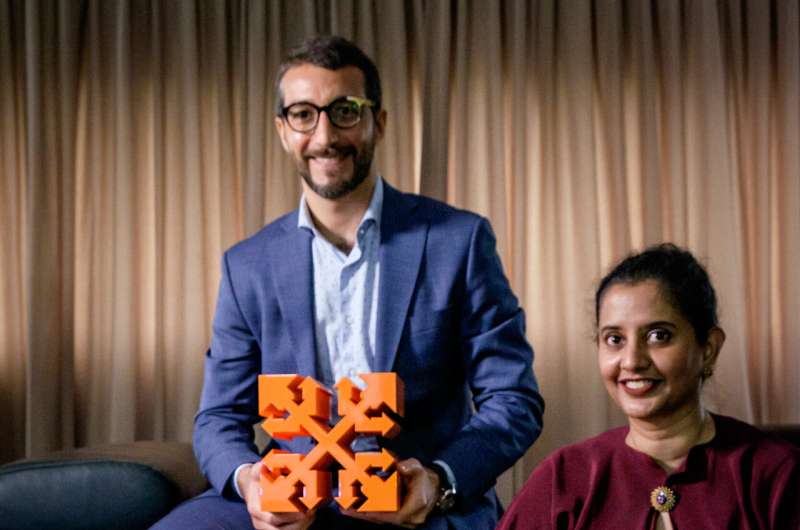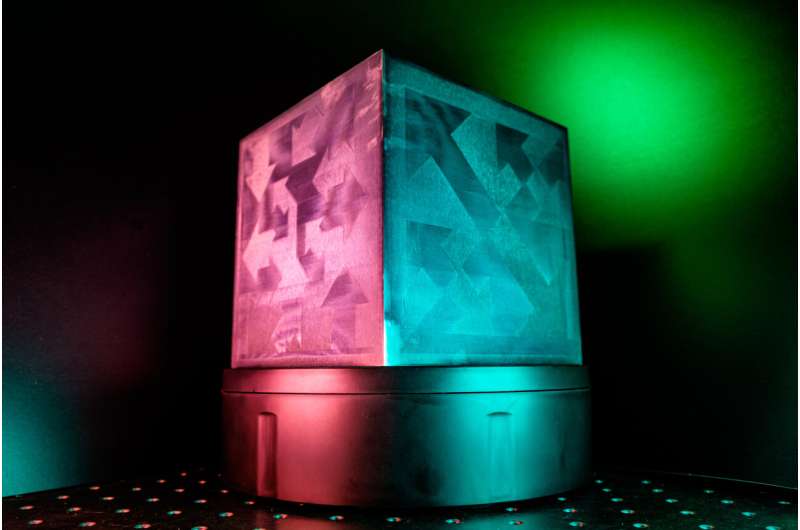The gallery is set to fly to the International Space Station (ISS) aboard the NG-17 rocket as part of a Northrop Grumman Cygnus resupply mission in February of 2022. The art projects featured in the gallery will reach the final frontier of human habitat in space, and mark the historical meeting point of the Moon Gallery and the cosmos. Reaching low Earth orbit on the way to the Moon is a pivotal first step in extending our cultural dialog to space.
On its return flight, the Moon Gallery will become a part of the NanoLab technical payload, a module for space research experiments. The character of the gallery will offer a diverse range of materials and behaviors for camera observations and performance tests with NanoLab.
In return, Moon Gallery artists will get a chance to learn about the performance of their artworks in space. The result of these observations will serve as a solid basis for the subsequent Moon Gallery missions and a source of a valuable learning experience for future space artists. The test flight to the ISS is a precursor mission, contributing to the understanding of future possibilities for art in space and strengthening collaboration between the art and space sectors.
Structure & reflectance cube
Our every perception, analysis, and thought reflect the influences from our surroundings and the Universe in a world of collaboration, communication and interaction, making it possible to explore the real, the imagined and the unknown. The 'Structure and Reflectance' cube, a marriage of Art and Technology, is one of the hundred artworks selected by the Moon Gallery, with a unifying message of an integrated world, making it a quintessential signature of humankind on the Moon.
Ms Lakshmi Mohanbabu, a Singaporean architect and designer, is the first and only local artist to have her artwork selected for the Moon Gallery. Coined the 'Structure and Reflectance' cube, Lakshmi's art is a marriage of Art and Technology and is one of the hundred artworks selected by the Moon Gallery. The cube signifies a unifying message of an integrated world, making it a quintessential signature of humankind on the Moon.
The early-stage prototyping and design iterations of the 'Structure and Reflectance' cube were performed with Additive Manufacturing, otherwise known as 3D printing, at Nanyang Technological University, Singapore's (NTU Singapore)Singapore Centre for 3D Printing (SC3DP). This was part of a collaborative project supported by the National Additive Manufacturing Innovation Cluster (NAMIC), a national program office which accelerates the adoption and commercialisation of additive manufacturing technologies. Previously, the NTU Singapore team at SC3DP produced a few iterations of Moon-Cube using metal 3D printing in various materials such as Inconel and Stainless Steel to evaluate the best suited material.
The newest iteration of the cube comprises crystals—ingrained in the cube via additive manufacturing technology— revealed to the naked eye by the microscopic differences in their surface roughness, which reflect light along different directions.

"Additive Manufacturing is suitable for enabling this level of control over the crystal structure of solids. More specifically, the work was created using 'laser powder bed fusion technology' a metal additive manufacturing process which allows us to control the surface roughness through varying the laser parameter," said Dr. Matteo Seita, Nanyang Assistant Professor, NTU Singapore, is the Principal Investigator overseeing the project for the current cube design.
Dr. Seita shared the meaning behind the materials used, "Like people, materials have a complex 'structure' resulting from their history—the sequence of processes that have shaped their constituent parts—which underpins their differences. Masked by an exterior façade, this structure often reveals little of the underlying quality in materials or people. The cube is a material representation of a human's complex structure embodied in a block of metal consisting of two crystals with distinct reflectivity and complementary shape."
Ms Lakshmi added, "The optical contrast on the cube surface from the crystals generates an intricate geometry which signifies the duality of man: the complexity of hidden thought and expressed emotion. This duality is reflected by the surface of the Moon where one side remains in plain sight, while the other has remained hidden to humankind for centuries; until space travel finally allowed humanity to gaze upon it. The bright portion of the visible side of the Moon is dependent on the Moon's position relative to the Earth and the Sun. Thus, what we see is a function of our viewpoint."
The hidden structure of materials, people, and the Moon are visualized as reflections of light through art and science in this cube. Expressed in the Structure & Reflectance cube is the concept of human's duality—represented by two crystals with different reflectance—which appears to the observer as a function of their perspective.
Dr. Ho Chaw Sing, Co-Founder and Managing Director of NAMIC said, "Space is humanity's next frontier. Being the only Singaporean—among a selected few from the global community—Lakshmi's 3D printed cube presents a unique perspective through the fusion of art and technology. We are proud to have played a small role supporting her in this 'moon-shot' initiative."
Lakshmi views each artwork as a portrayal of humanity's quests to discover the secrets of the Universe and—fused into a single cube—embody the unity of humankind, which transcends our differences in culture, religion, and social status.
The first cube face, the Primary, is divided into two triangles and depicts the two faces of the Moon, one visible to us from the earth and the other hidden from our view.
The second cube face, the Windmill, has two spiraling windmill forms, one clockwise and the other counter-clockwise, representing our existence, energy, and time.
The third cube face, the Dromenon, is a labyrinth form of nested squares, which represents the layers that we—as space explorers—are unraveling to discover the enigma of the Universe.
The fourth cube face, the Nautilus, reflects the spiraling form of our DNA that makes each of us unique, a shape reflected in the form of our galaxy.
Explore further



